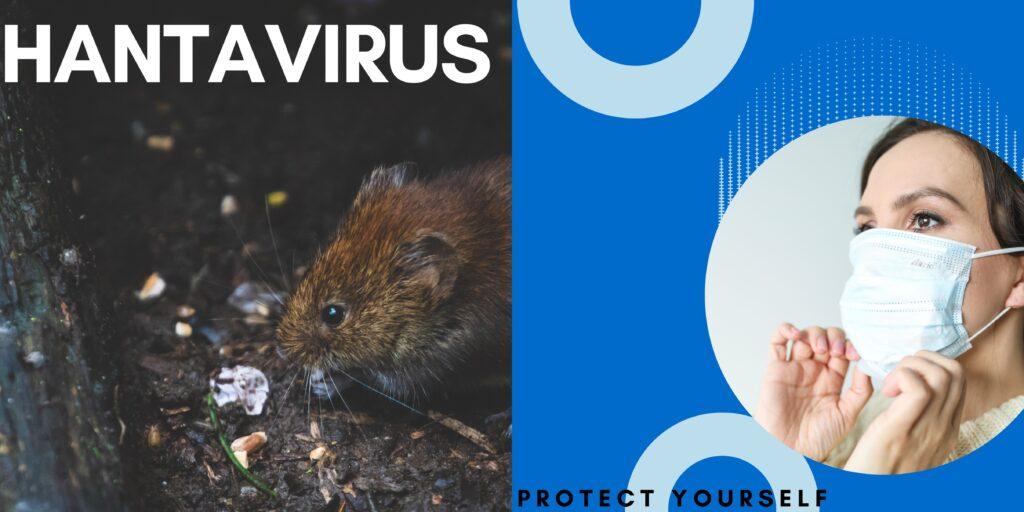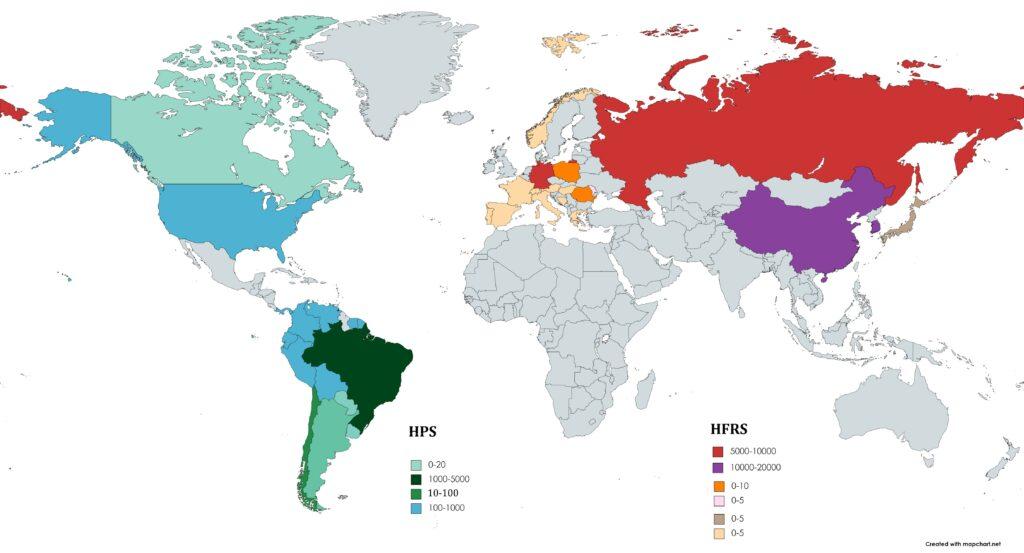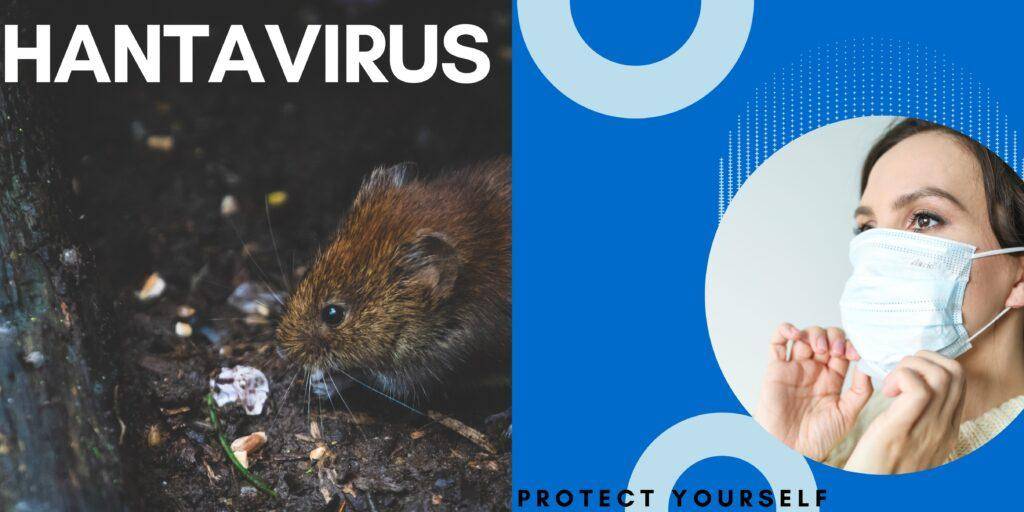By Dr. Zahid Iqbal
Hantavirus
Hantavirus is a type of virus that infect rodents but does not cause diseases in them. And, when getting entry into humans can cause some serious infections.
Genome
What is Hantavirus? This is a burning question these days.
Well, it is a single-stranded RNA virus belonging to the Hantaviridae family of viruses.
The member of this family is called Orthohantaviruses or in short Hantavirus. They can produce diseases with various symptoms.

Where they are found?
They are found frequently in Asia and Europe but may be present in all parts of the world except the Australian continent.
In the American region, they are called “New-world viruses”, and in the rest of the world “old-world viruses”.
This virus was first found during the Korean War in the vicinity of HANTAN RIVER in South Korea.
That’s why it is called Hantavirus. In 1970, Ho Wang Lee, first isolated this virus.

Is it a Mouse drooping disease?
The virus is found in the rodents like rats, mice, etc but they don’t harm them. Drooping means poop, feces, or stool. Viruses are present in rodents’ saliva, urine, and drooping.

As rodents, mostly mice or rats are found in the surrounding humans, some people also called it “mouse poop disease”.
Because the rodent (commonly rats and mice) are involved in producing the hantavirus disease, so are called hantavirus mice or hantavirus rats.
Do house mice carry Hantavirus?
Not all mice carry this virus. In the united states, most commonly, white-footed mice, deer mice, cotton rats, and rice rats carry hantavirus.
Only 15-20% of the above-mentioned rodents carry Hantavirus.
How long does Hantavirus live in droppings?
The virus can live in the environment for 2-3 days at room temperature
Hantavirus transmission -how does this occur in humans?
The chances of infections are more in rural areas where rodents may be present in abundance.
So home and workplaces where rodents are more, people are at greater risk of catching Hantavirus.
The virus is usually transmitted to humans by inhalation of contaminated air.
This process is called airborne transmission. Actually, small droplets from rodents’ urine, drooping, and saliva may form small airborne droplets. In this way, Hantavirus is transmitted to humans via aerosolization.
There are some other ways of virus transmission to humans like,
- Rodents bite (though, it is rare)
- By eating contaminated food
- By touching drooping, urine, and saliva and then touching their mouth and nose.
There are many types of Hantaviruses but the majority of them do not produce diseases in humans.
What are Hantavirus symptoms in humans?
Hantaviruses can affect mainly two human body systems.
#1 Hantavirus pulmonary syndrome (HPS)
When they affect the respiratory system this is called Hantavirus pulmonary syndrome (HPS) or Hantavirus cardiopulmonary syndrome (HCPS). It has early and late symptoms.
Early symptoms include;
- Headache
- Muscles ache
- Fever
- Chill
- Stomach problems
- Dizziness
Late symptoms include;
- Lung filled with fluid(pulmonary edema)
- Difficulty in breathing
In the late stages, it can lead to life-threatening respiratory and cardiac problems. This is more common in the United States and caused by the “new world Hantavirus”.
#2 Hantavirus hemorrhagic fevers with renal syndrome-HFRS
This is caused by “old-world Hantavirus” and is more common in Asia and Europe. Initially, the symptoms may include fever, chills nausea, vomiting, abdominal discomfort, etc. Later bleeding may occur in various parts of the body including under the skin. Low blood pressure may occur. Later, kidney dysfunction may peruse.
Who is at greater risk?
All healthy humans are at risk. Some people and professionals are at greater risk which may include;
People in the rural setting
This is because of more chances of rodents present in that area. Many stores and warehouses are present in rural areas to store foodstuff, so chances are more there.
Cleaning activities in vacant Buildings
This may include storerooms, basements, garages, cabins, etc, that have been closed for a long time. These sites are a possible risk for Hantavirus infections. So care must be taken while cleaning unoccupied dwellings.
Professional
Some people like researchers dealing with rodents, Cleaners, utilities, farmers, construction, etc have more chances of contact with rodents and thus infection.
Campers/Hikers
Living in cabins, and huts, which are unoccupied for a long time, particularly near forests and fields.
Hantavirus treatment-what are the possibilities?
There is no specific treatment to date. Only supportive therapy is provided to the patients. Serious cases must be admitted to the hospital with intensive care support.
The use of antiviral drugs hasn’t proved to be effective yet.
Are any long-term complications?
It is observed that people who suffered from the new world virus recover completely if they don’t have any secondary infections or any other complications. It doesn’t lead to any chronic infection in humans.
For some people that have low immunity, the infection may last longer but the virus itself doesn’t pose any longer effects on humans.
What is Prevention?
Hantavirus is best prevented by minimizing contact with rodents with humans. So care must be taken at all places like home. offices, educational institutes, old age homes, and other places where humans may be present.
You must prevent all the ways through which rodents can get entry into homes like closing holes and cracks. Another option is keeping predators like cats at home so that they can reduce the chances of rodents’ presence at home.
The virus can survive for 2-3 days at room temperature. Sunlight can destroy viruses in a few hours. So proper ventilation along with proper cleaning of rodent droppings or urine is essential to minimize the survival of viruses.
Vaccine
FDA hasn’t approved any vaccine yet. However, Vaccine against a few viruses is being used in South Korea and China. Research is still underway.
Epidemiology
This virus is present in all Humans occupied continents except Australia.
Hantavirus in America
In the year 1993 in May, an outbreak occurred in the southwestern United States with some unexplained pulmonary illness. Within a short period, investigators discovered that five young healthy people had died after acute respiratory failure. By November the specific Hantavirus that caused the outbreak was isolated. Since then virus outbreaks have occurred in several places across the US.
The most common Hantaviruses in the US are;
- Sin Nombre orthohantavirus
- New York orthohantavirus
- Bayou orthohantavirus
- Black Creek Canal orthohantavirus
From 1995 to 2017, 728 cases of Hantavirus had been reported in 36 states of the US. Hantavirus cases are mainly reported in the United States from New Mexico, Colorado, Arizona, California, Washington, Texas, Montana, Utah, Idaho, and Oregon. Hantavirus in Michigan is also reported in Washtenaw County recently. A female was hospitalized with a fatal pulmonary illness from Sin Nombre hantavirus. She was probably exposed while cleaning an unoccupied home.
Death Ratio
The death ratio remained at about 36% of all reported cases.
Luckily, the types of virus that cause HPS in the US are not transmitted from person to person like by touching or kissing.
But in South America, the countries like Argentina and Chile, there are few cases where viruses had transmitted from person-to-person
Canada
Most of the cases in Canada were due to the “Nombre Virus” and the culprit for transmitting was ‘deer mice’. A total of 109 cases were reported in Canada from 1989 to 2014 with a death ratio of 29%. Most of the cases were from British Columbia, Saskatchewan, Alberta, and Manitoba. The majority of cases were linked to the farming and domestic setting.
South America
Among the viruses found in South America, the most prominent one is Andes Virus. It is also known as Castelo de Sonhos ( Portuguese for “Castle of Dreams”), Oran, Juquitiba, Lechiguanas, Araraquara, and Bermejo virus. This is the only Hantavirus that can be transmitted from person to person.
Europe
Two types of virus i.e., “dobrava Belgrade” and “puumala” affect people in most European regions except the Mediterranean. Yellow-necked mouse and striped field and blacked sea mouse is the host for these viruses.
Asia
In Asia, China, the Korean peninsula, Hong Kong, and Russia are affected by viruses. The major culprit remaining in these countries are Puumula, hantaan, and Seoul viruses.
Australia and New Zealand
These are countries where this virus is not found. One of the reasons may be that rodents have antibodies against viruses.
Africa
A type of hantavirus called Sangassou virus is most common in Africa that was isolated in 2010.
Brief History
In 1931, a clinical case was detected in northeast China. Just about the same time in the 1930s, it was also identified in Sweden. Infection with Hantavirus came to the detection of Western physicians during the Korean War.
During this war, between 1951 and 1954 more than 3,000 UNO soldiers became victims of the outbreak. In the United States in 1993, an outbreak occurred, and after that sin nombre orthohantavirus was found. Since then, about 43 types are sound referred to as the “New World Hantaviruses”.
Please also read this article











